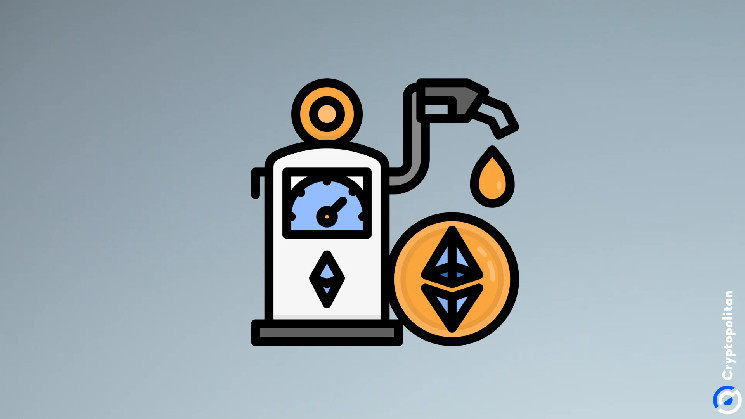Ethereum’s gasoline restrict could also be raised from 30 million to 40 million to decrease transaction charges by 15-33%. Supporters of the proposition argue it should enhance dApp effectivity, whereas critics warn it might trigger centralization and community pressure.
Ethereum is in an essential debate inside its neighborhood. The main focus is on whether or not or to not increase the gasoline restrict, the utmost quantity of gasoline that can be utilized per block. The talk is about lowering transaction charges and bettering the community’s effectivity.
Whereas the concept of elevating the gasoline restrict obtained assist, it additionally raised considerations about its impression on community stability and decentralization. This ongoing dialogue raises a key query: can Ethereum deal with increased gasoline limits with out sacrificing safety and decentralization?
Ethereum gasoline restrict
To grasp the controversy, it’s important first to know what the gasoline restrict means inside Ethereum. Fuel is a payment that customers pay to execute transactions or run good contracts on the community.
Every operation on Ethereum requires computational work, and gasoline measures the quantity of labor wanted. The gasoline restrict refers back to the cap on how a lot gasoline can be utilized in a single block of transactions.
Setting the gasoline restrict too low can result in congestion, excessive transaction charges, and slower processing occasions. Alternatively, too excessive can create elevated stress on the community’s assets, akin to storage, bandwidth, and computational energy.
Ethereum’s present gasoline restrict is simply above 30 million, however many in the neighborhood are pushing for it to be elevated. Shifting forward with the proposition might cut back transaction charges, permitting for higher scalability and effectivity.
The push for elevating the gasoline restrict
Ethereum builders and validators have been pushing to lift the gasoline restrict for a while. In March 2020, core Ethereum developer Eric Connor and former MakerDAO govt Mariano Conti began a marketing campaign referred to as “Pump The Fuel,“ aiming to extend the gasoline restrict to 40 million.
They imagine this variation might decrease transaction charges by 15% to 33%, which might profit each builders and customers. Decrease charges would make it simpler for builders to create extra complicated purposes and providers, encouraging extra individuals to make use of decentralized purposes (dApps) on Ethereum.
One of many most important supporters of this variation is Emmanuel Awosika, the artistic director of the 2077 Collective. He argues that the present gasoline restrict is simply too low for high-demand purposes.
Many dApps, like video games or decentralized finance (DeFi) platforms, battle to function effectively with the present restrict as a result of the charges turn out to be too excessive throughout busy intervals. Rising the gasoline restrict would assist these purposes run extra easily and be extra user-friendly.
Community stability vs. dangers of elevating gasoline limits
Whereas many individuals assist elevating the gasoline restrict, not everybody within the Ethereum neighborhood agrees with the strategy. One of many most important critics is Toni Wahrstätter, a researcher on the Ethereum Basis. His concern is that growing the gasoline restrict too shortly might hurt Ethereum’s safety and stability.
When the gasoline restrict is raised, it requires extra computational energy to course of and validate transactions. This might put further stress on Ethereum’s infrastructure, which will certainly make it tougher for smaller and unbiased operators.
Solely bigger operators with extra assets can deal with the excessive gasoline restrict. This might result in centralization, which is in opposition to Ethereum’s core concept of decentralization.
One other subject with growing the gasoline restrict too quick might trigger issues like increased storage wants, slower speeds, and extra stress on the community.
The “Pump The Fuel” marketing campaign agrees with these considerations and means that any change to the gasoline restrict must be made slowly and punctiliously to keep away from creating extra issues, like community congestion or efficiency points.
Discovering the correct stability
The Ethereum neighborhood continues to be debating how you can transfer ahead with elevating the gasoline restrict, however there isn’t any settlement on how a lot it must be raised.
On December 19, it was reported that 10% of validators backed elevating the gasoline restrict to over 30 million. Nevertheless, many individuals imagine that the rise must be gradual, so the community can modify to the added stress.
For instance, junior Ethereum researcher Justin Drake elevated his validator’s gasoline restrict to 36 million, which is a 20% rise from the present restrict. In accordance with him, it “safely greases the wheels.” Drake thinks this variation would assist the community deal with extra transactions with out inflicting main points.
The choice to lift Ethereum’s gasoline restrict is an element of a bigger dialog about its future scalability. With Ethereum 2.0 already working to enhance effectivity and safety, managing gasoline limits is important for dealing with extra transactions with out shedding decentralization.
Elevating the gasoline restrict might assist builders and decrease transaction charges, however it should be carried out fastidiously. Any adjustments must be gradual to keep away from affecting the community’s stability.
Land a Excessive-Paying Web3 Job in 90 Days: The Final Roadmap



